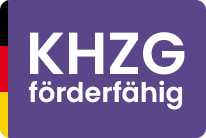Lessons from Covid-19 – 4 essential benefits of remote patient care and monitoring
Hospitals fighting to contain the Covid-19 epidemic have identified four essential requirements: 1 scale the volume of care rapidly and flexibly; 2 improve the chances of recovery by providing earlier diagnoses and interventions; 3 minimise the risk to hospital staff by reducing contact with infectious patients; 4 deliver a better service by learning fast and making efficient use of human resources.
Each case has highlighted the need for remote monitoring and patient care. Hospitals have been quick and resourceful in adapting the technology they have to fulfil these functions. Monitors from other hospital units have been repurposed and redeployed for ICUs. But in most cases they have had to make do and mend with technology not designed to integrate across the patient spectrum and this has led to care gaps and workflow inefficiencies.
Here we highlight how purpose-built remote healthcare technology like the Medix Care Platform will close these gaps, deliver improved healthcare day-to-day and help health services around the world become better prepared for the next pandemic.

1 Scaling the volume of care
During the Ebola crisis of 2014-16, there was a vital need to trace and monitor confirmed cases to control the spread of the disease. An Ebola Contact Tracing app was developed, which gathered data much faster, more securely and more comprehensively than paper-based systems.
The use of mobile remote monitoring technology enables health services not only to reach people in remote areas, but also to scale up patient monitoring very quickly when a pandemic like Covid-19 strikes. Anyone with their own mobile device and connectivity can come onboard.
Two important functions of remote monitoring apps is that they are easy to use, with clear, user-friendly dashboards, and can integrate with their systems to provide a seamless service throughout the patient journey.
Cost is another key factor. The efficiencies provided by remote monitoring apps can enable healthcare providers to look after the needs of large numbers of patients within existing budgets.

2 Improving the chances of recovery
Early diagnosis is the key to better healthcare. This requires doctors to have a good understanding of each patient’s medical history and continuous visibility of a patient’s condition, so they can be alerted as soon as the patient shows signs of distress and act quickly to prevent escalation.
A problem that has arisen from the repurposing of hospital units for treating Covid-19 is that the need to move patients around has resulted in knowledge gaps. A patient may be monitored on one device in one unit and then switched to another device in another unit. The ideal solution is a mobile, wireless monitoring system that keeps track of the patient wherever they go and delivers seamless data.
By monitoring patients at every step of their journey – from home to hospital and back home again – as well as recording any comorbidity conditions they may have, remote patient care can deliver a much more comprehensive and detailed picture to doctors and thus greatly improve the outcome for many more patients.

3 Minimising the risk to hospital staff
The sacrifices made by hospital staff have been extraordinary but also tragic and detrimental to the ability of health services to cope with Covid-19. Hospitals have tried to minimise clinicians’ exposure to infectious patients in whatever ways they can – from PPE to placing monitors outside treatment rooms.
This has highlighted the importance of contactless monitoring. The more a doctor can diagnose remotely, the less the risk of exposure to infection. We are likely to see a sizeable increase in the use of remote patient monitoring for this reason alone and the technology is already offering practical solutions, such as wearables and camera-based devices, which can monitor vital signs without the need for unnecessary human exposure, as well as Telehealth solutions like VicoCare, providing video connectivity to patients in isolation.
The ability to monitor and treat patients at home has also been an important factor in keeping patients with other conditions away from areas of high infection, ie hospitals, and thus reducing the unnecessary spread of Covid-19.

4 Delivering a better healthcare service
The Covid-19 pandemic has seen hospital resources stretched to breaking point, a manpower crisis, huge financial costs and a worrying drop-off in the treatment of non-Covid-19 patients. Hospitals and their staff have done an incredible job – but now it’s time to learn the lessons and improve the quality of health services around globally.
That means:
- Making more efficient use of hospital resources
- Getting more from medical staff – not by asking them to work longer hours but by reducing the time wasted on non-essential interventions – and giving them better protection, thus reducing their stress levels
- Providing a more holistic care service to all patients, whether at home, in hospital, or back at home after a hospital stay.
Mobile patient care and monitoring apps will enable our health services to improve in all these ways, with earlier diagnosis and intervention, seamless monitoring between locations and well-informed follow-up care, all connected to one central data hub that will provide doctors with all the information they need, where and whenever they need it.
Ask for a demo of Medix Care Platform. Call + 44 7803 141577









